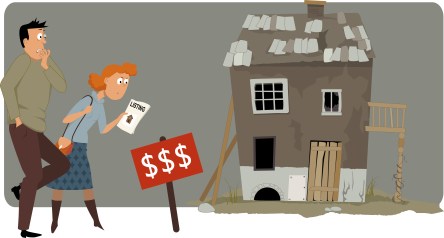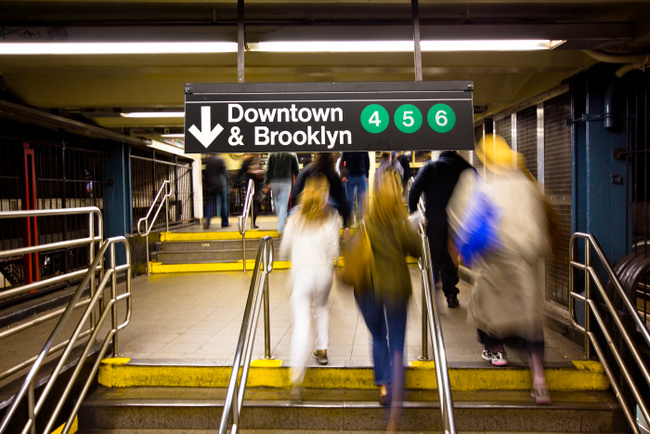For centuries, explorers looked to the stars to help them navigate new worlds. In Baltimore, stargazers aren’t using the night sky to track galaxies explore the Milky Way. Instead, the same modeling and algorithms used to map galaxies is being repurposed for a more pedestrian purpose: urban vacancies. Astrophysicists and city planners are working together to find new ways to manage abandoned buildings and future development. Patterns and Particles As part of an effort to help the city manage housing stock and anticipate residency trends, Baltimore recently partnered with John Hopkins University astrophysicist Tamás Budavári to find a way to detect patterns and predict which parts of the city will thrive, and which areas will end up empty and abandoned. According to Budavári, though astrophysics may have little in common with urban planning, at the core is a fundamental need to detect and detail patterns not readily apparent. “I thought: Can we measure this correlation of clustering of vacant houses the same way we made measurements about astronomy,” Budavári explains in a recent interview with Wired. Data and Diligence Last year, Baltimore Housing Commissioner Michael Braverman contacted Budavári about developing an algorithmic tool capable of predicting the city’s vacancies. Working through the John Hopkin’s Center for Government Excellence (GovEx), Budavári and Braverman are working together to find a proactive approach to the city’s urban planning. The key? Data. GovEx is a three-year program funded by Bloomberg Philanthropies. The goal of the organization involves aiding municipalities with the collection and analysis of data, so that “governments [can] effectively use data in order to make informed decisions on services that improve people’s lives.” The program also connects 120 partner municipalities across the country, helping each city manage data and share strategies. “We can take what we learn,...
Cities Take the Lead
Combating Climate Change
Treaties and international accords can certainly trigger change, but most of the time the real action happens on the ground. Grassroots campaigns and public support can often pick up momentum, powered by the actions of small groups and individuals committed to a cause. As a result, when it comes to global issues like sustainability, renewable energy and climate change, cities have to power to make a big difference. “There is no single solution for solving global climate change,” declares the C40 Cities organization, “but cities have the ability, capacity and will to lead.” “We believe that a global future lies in urban innovation and action,” the group states on their website. “As the majority of future humans will live in cities, it just makes sense that our solution to climate change will reside there too. A Costly Climate While images of starving polar bears and collapsing glaciers have come to symbolize the environmental impact of a warming planet, the economic effects felt by cities are equally significant. According to a new study published in Nature Climate Change, large metrolpolitan areas experience the economic consequences of climate change at a rate three times higher than the less populated regions of the world. Some of the costs are the result of the “urban heat island effect.” Because cities often include huge swathes of land covered in pavement and concrete buildings, the heat those materials absorb is emanated back out into the atmosphere, resulting in temperature increases as high as 19˚F. Researchers have dubbed Los Angeles an “urban heat archipelago,” for example, because urban sprawl has led to several “islands” spread out across the Los Angeles Basin. “It’s like a whole chain of urban heat islands that run into each other,” explained Gina Solomon, Deputy Secretary for Science...
Affordability Crisis
Toolkit for Development
While the ghosts of the last decade’s housing crisis have (mostly) been put to rest, for many families priced out of their local markets the need for affordable housing remains strong. Like the PC’s infamous “blue screen of death,” the Urban Institute’s map of affordable housing inventory is terrifying to behold. A handful of dark blue swatches in Midwest represent healthy levels of affordable housing inventory. The rest of the country, on the other hand, sits awash in the lightest indigo hues. From barely perceptible azure to the palest cerulean, a majority of states contain less than 50 units per 100 extremely low-income households. More than a third sit at, or close, to zero. As demand for budget-friendly rentals continues to rise, many communities struggle to provide adequate supply. In response to this affordable housing crisis, the White House recently released the Housing Development Toolkit. Part call to action, part policy overhaul, the toolkit’s main purpose it to help cities increase their affordable housing inventory. “The growing severity of unsupplied housing markets is jeopardizing housing affordability for working families,” write the toolkit’s authors, “increasing income inequality by reducing less-skilled workers’ access to high-wage labor markets, and stifling GDP growth by driving labor migration away from the most productive regions,” Accumulated Barriers While New York City’s real estate market is the stuff of legend, until recently most cities were able to supply adequate housing to residents. Unfortunately, several factors have conspired over the last few years to shrink stock and ramp up costs. These “accumulated barriers” are identified by the toolkit as lack of adequate construction, high job growth in areas with low vacancy rates, gentrification, and cost-per-unit increases paired with insufficient public assistance. “The accumulation of these barriers has reduced the ability of many housing markets to...
Data Powered Cities
Information and Infrastructure
The future of urban planning lies in not just accessing information, but deploying it as a resource to enhance urban planning and improve the lives of residents. Every minute of every day, data is collected, stored and analyzed. So many of our daily activities now leave behind digital breadcrumbs, from trips to the grocery store to the books we check out of the library. Sometimes it can feel like we’re trapped in a dystopian nightmare reminiscent of 1984, but in reality, data is agnostic and nonpartisan. There is no opinion or bias, just facts and figures. So what’s the upside of all this statistical accumulation? For city planners, data collection provides the opportunity to fundamentally change public works and infrastructure. The more data shared, the better organization possible, from efficient traffic measures to responsive streetlamps. Thanks to organizations like Open Government Partnership and the Open Data Institute, urban planning is now in the midst of a “data revolution.” “We are helping build the data infrastructure for the UK and beyond” ODI CEO Gavin Starks recently declared. “As our economy and society continue to become data-driven, we need to address the fact that data is as important as roads, water and energy.” “Working with our partners and diverse communities, we will continue to support and convene data pioneers, helping them develop open standards, improve data literacy, build trust, address policy, create business models, and tackle challenges that impact everyone. Together, we will help build a robust data infrastructure that enables open innovation – at web scale.” Tracking Transportation According to the US Census Bureau, the average daily commute last about 25 minutes, one way. That’s almost an hour a day spent in traffic, and many nine-to-fivers will tell you that’s on a good day. Between...
Walkable Urbanism
The future, on foot
Do you remember the last time you walked by a multifamily community under construction? Think carefully about the walking part, because it’s important. Chances are, you were strolling in a city, not a suburb. Does anybody walk in the suburbs, other than to take the dog around the block? The answer to that question might hold the key to how development patterns will change, nationwide, over the next half-century. Apartment construction has bounced back big time, post-recession, and the hot spots for building are big cities with appeal to Millennials and Baby Boomers alike. Seattle, Portland, San Francisco, Los Angeles, Salt Lake City, Denver, Houston, Dallas, Chicago, Minneapolis, New York, Boston, and Washington D.C. “This is becoming a tale of two metro areas in this country: Those that get it, those that understand that walkable urban development is where the pent up demand is, and those that don’t. Any list of walkable metro areas that are doing well is also the list of best performing real estate markets,” said Christopher Leinberger, the leading expert on the walkable urbanism trend. In some urban neighborhoods, developers can’t build fast enough to keep up with renter demand. What’s the secret? Not the old school adage “location, location, location.” Leinberger, a senior fellow at Brookings Institute and professor at Georgetown University, describes it as closer to transit, transit, location. The research data he and his colleagues have produced on walkable urbanism has been of great interest to the media as the development cycle heats up. Having observed trends and nuance in real estate for several decades, he is perfectly positioned to explain the changing real estate development landscape. And it happens that the type of urban development he has long advocated for is now rolling out – and up – before our very eyes. “This is a major structural change, and I know there’s a lot of concern out there that this is just a blip,” he said, singling out the youngest group of apartment renters, the Millennials. They’ve been leading the demand for transit-friendly urban housing, and some observers think that once they’re ready to marry and have kids, they’ll flee the cities, heading back to the suburbs. Leinberger would strongly disagree. “We have just massively overbuilt. There’s only two ways of building the built environment – drivable suburban, and walkable urban. They are diametrically opposed as far as all the various characteristics you would use to describe them. Both are market viable, so it’s not a value judgment as to one is better than the other. It’s that we built too much of the drivable suburban, because we’ve been doing that for 50-60 years. We have pent up demand for walkable urban.” Leinberger believes that the timespan for meeting that pent up demand is long – maybe even another half-century. So expect to keep walking by major development and redevelopment projects while you’re visiting your favorite cities. And in the suburbs, there may start to be similar change – or consequences. “Get an anchor that’s walkable urban, and there will be an aura around that anchor that will help bolster (property) values,” is Leinberger’s advice to outlying, non-urban areas. Cities – even small ones – that can blend destination shopping and dining, services and offices, multifamily housing and public transit access all in the same area are planning well. His insight is more than academic. Leinberger started his real estate career as managing director and co-owner of consulting film RCLCO (formerly Robert Charles Lesser & Co). In addition to his academic work, he is President of LOCUS, a network of developers and investors who support and practice walkable urban development. And to practice the philosophies he espouses, he and several partners founded Arcadia Land Company, which works on transit-focused, new urban projects. The changing multifamily development pattern is just one piece of the walkable urbanism puzzle. A more complete picture requires...





